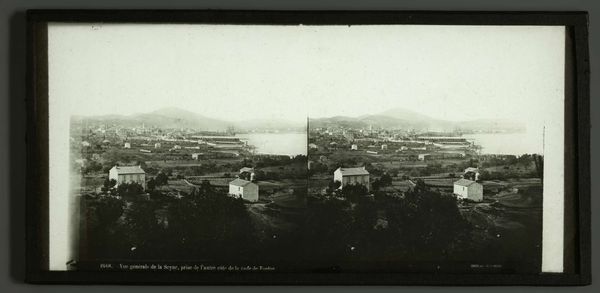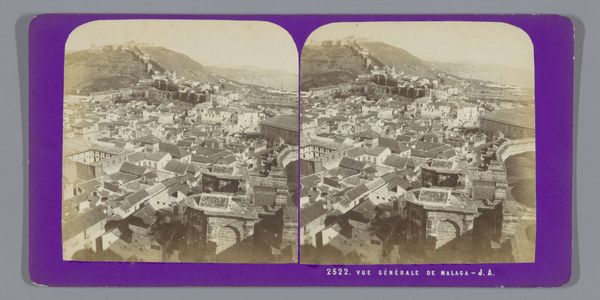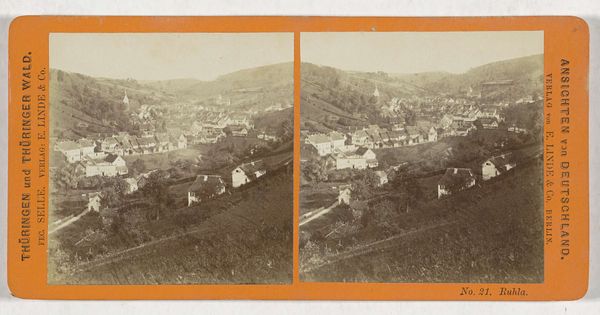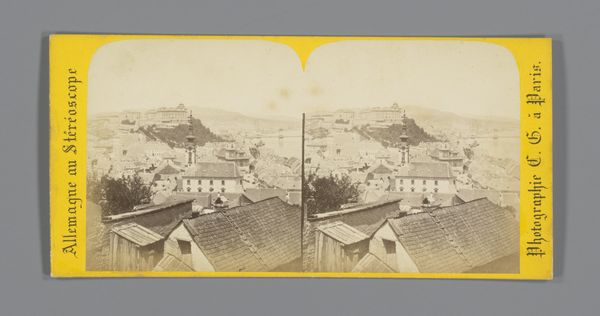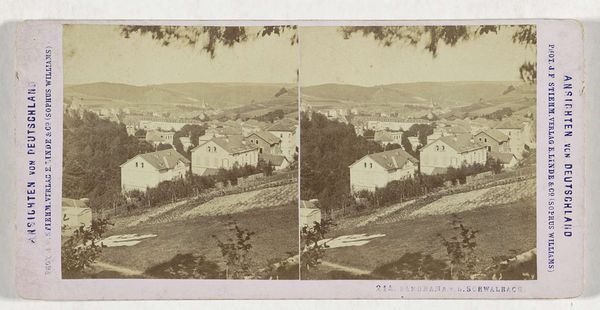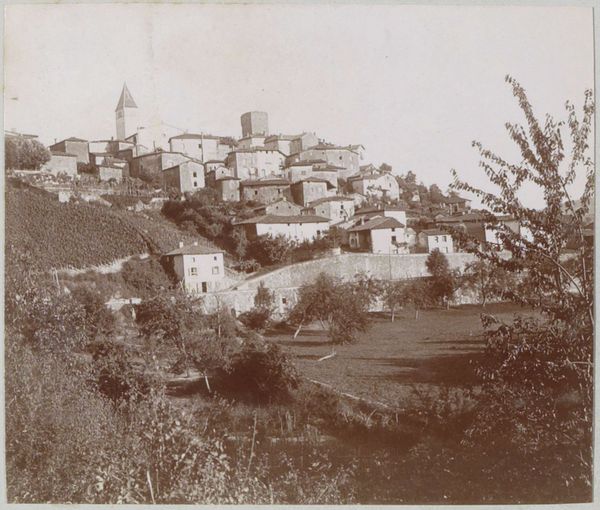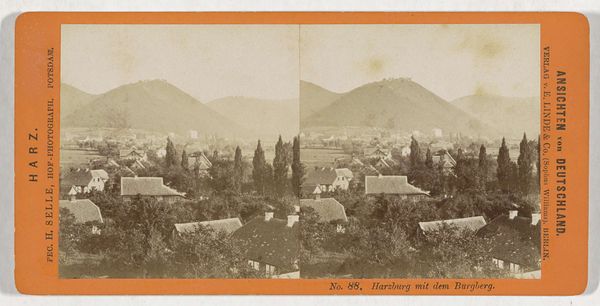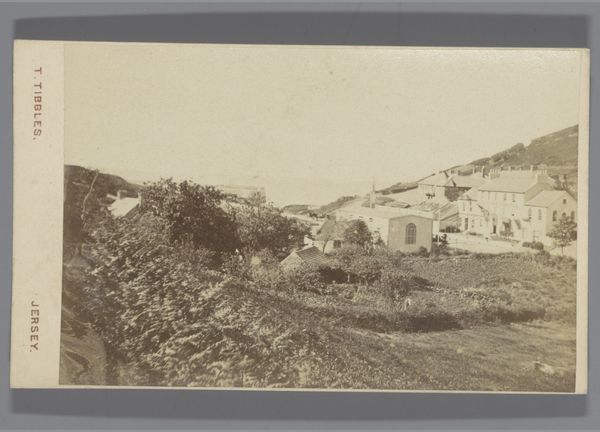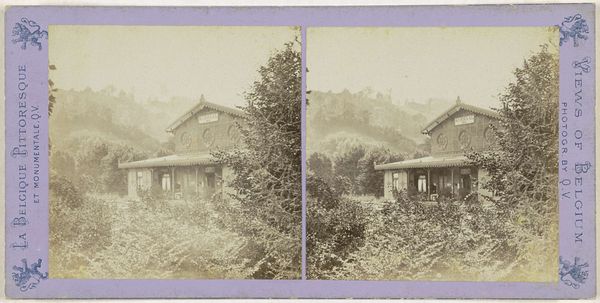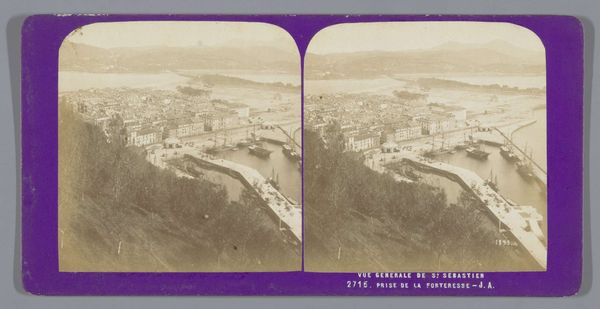
photography, gelatin-silver-print
#
landscape
#
photography
#
gelatin-silver-print
#
cityscape
Dimensions: height 85 mm, width 170 mm
Copyright: Rijks Museum: Open Domain
Curator: This is a photograph entitled "Gezicht op Hondarribia," which translates to "View of Hondarribia," created between 1862 and 1876 by Jean Andrieu. The medium is a gelatin-silver print. Editor: It's immediately striking how this seemingly simple image holds so much—there's a distinct sense of place, of historical weight. The sepia tones lend a nostalgic feel, yet the precise details suggest a certain detachment. Curator: Indeed. As a gelatin-silver print, it speaks to the evolution of photography's accessibility during this period, impacting its role as a tool in travel and documenting society. It reflects how the public perceived these burgeoning photographic viewpoints and what cultural power they carried. Editor: The gaze is from a position of privilege, both physical and, perhaps, societal. We look down upon Hondarribia, placing the viewer in a position of implied authority. I wonder how that inherent power dynamic affected not just how this landscape was perceived, but also by whom. Curator: Exactly! Early photographic cityscapes were often deployed to reinforce particular social structures and ideas about property and belonging, reflecting ideas about empire and social class. How might that translate within this photograph in relation to place and its photographic representation? Editor: It's interesting how the city seems orderly but a bit obscured in the distance, almost like a planned space, but it hides stories and untold truths. A commentary about ideal locations versus the lived-in ones. Curator: Or even a promotion for urban development and land ownership? We need to see it through a critical lens, considering who had access to these representations and how they reinforced existing power structures. The beauty might hide insidious undertones. Editor: It certainly complicates our understanding, urging us to consider both the beauty and its potential social or political messaging. Even something as straightforward as a "view" is loaded with questions. Curator: Precisely. What at first glance is a scene revealing details and context speaks about how early landscape photographs and public image building reinforced particular hierarchies within 19th-century society. It forces a deep examination. Editor: Agreed. And perhaps what appear like aesthetic depictions might mask a complex dynamic about observation and perspective.
Comments
No comments
Be the first to comment and join the conversation on the ultimate creative platform.
